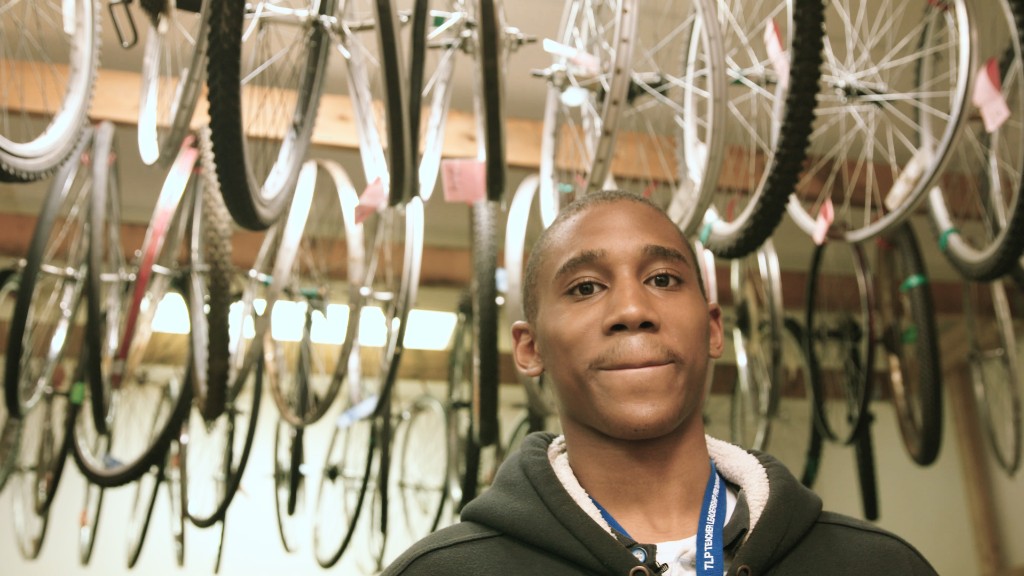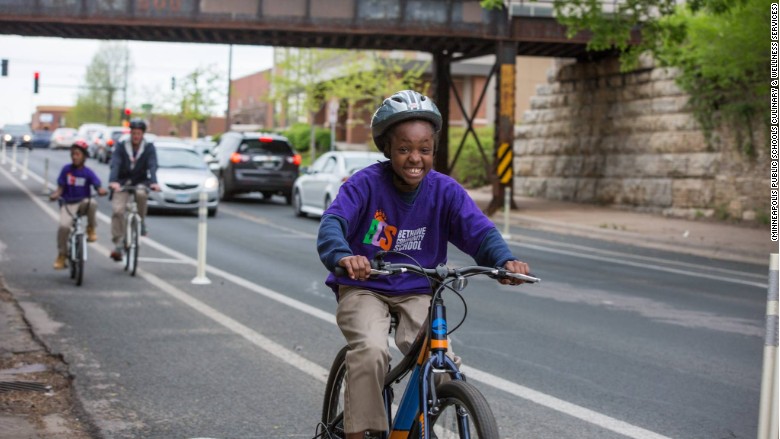
Maura Flanagan teaches at the Brooklyn Transition Center, a high school for students with emotional disorders. Some students are autistic, others have been kicked out of previous schools.
BTC has a full complement of guidance counselors, therapists and special educators to work with its students, but one of the most promising additions has been a bikeshare program.
Last fall the school was selected for a first-of-its kind experiment from the New York Department of Health. A handful of Flanagan's students were recruited to ride to and from school. They took a bike safety class, were given helmets, and started pedaling around Brooklyn's streets. By this spring, 15 students had bikeshare memberships—as well as a greater sense of independence and confidence.
"When you learn to ride a bike, there's a big pride in that, especially the first time you cross a bridge in New York City or the first time that you ride your bike home by yourself," Flanagan said. "There's a different level of pride than just taking the subway or walking home."
But a program like this wouldn't even be legal in many U.S. cities, where teenagers are trusted with 3,500-pound cars before they can ride a 45-pound bikeshare bicycle. San Francisco, San Diego, Portland, Baltimore, Birmingham and New Orleans all require bikeshare riders to be 18.
In the United States, more than $23 billion a year is spent getting kids to school; almost nothing is spent on bikes, and this blind spot is costing cash-strapped municipal governments.
"We should absolutely be giving these kids memberships or reduced-fee memberships because it lowers our costs," said Gabe Klein, co-founder of the transportation consultancy CityFi and former transportation commissioner in Chicago and Washington, D.C.
In many municipalities, it would be cheaper for the government to buy a child a new bike each school year, rather than paying for bus service. In 2013, $914 was spent per U.S. student on transportation. A serviceable bike can be bought for half that figure. And a bikeshare membership could be bought for even less.
Related: The case for bicycles' inevitable triumph over cars
It's a different story elsewhere in the world. Chinese children are welcomed on the country's thriving bikeshare systems at age 12. In Paris, home to Europe's largest bikeshare program, 14-year-olds are allowed. Milan's bikeshare has a set of small bicycles designed to fit children.

The age minimums for U.S. bikeshare systems are generally 16 or 18 years of age, restricting most highschoolers from riding. How to best set these age minimums is an afterthought. A Boston department of transportation spokeswoman told CNN the department wasn't even sure why its bikeshare's age minimum had been set at 16. Many defer to the company that operates their bikeshare system. These companies are inclined to set high age minimums rather than pay additional insurance costs.
Research shows that children who exercise in the morning concentrate better in school. When more people rides bikes, air quality improves, aiding everyone's health. Having a bicycle also teaches responsibility and confidence.
"Kids get to see [that] their parent recognizes they're a functioning human being, whose job is to develop and grow as opposed to being a FedEx package, whose job is to be ferried from one place to another," Lenore Skenazy, author of the book Free-Range Kids, told CNN.
In small pockets of the U.S., some people are starting to understand bikes' potential.
Minneapolis Public Schools has a fleet of 40-some bicycles that travel from school to school. Students, from 4th to 8th grade, learn how to ride safely on city streets and respect rules of the road.

"It's opening the city to kids in a way that hadn't been before," said Jenny Bordon, who directs the Minneapolis Public Schools program. "There's a real ownership that students feel over their city when they're riding in the street."
But these same students, like schoolchildren across the country, don't have access to the local bikeshare. The operator of the system told CNN it believes it's important for riders to understand traffic rules. And since 16-year-olds generally have driver's licenses, that's the age they picked.

